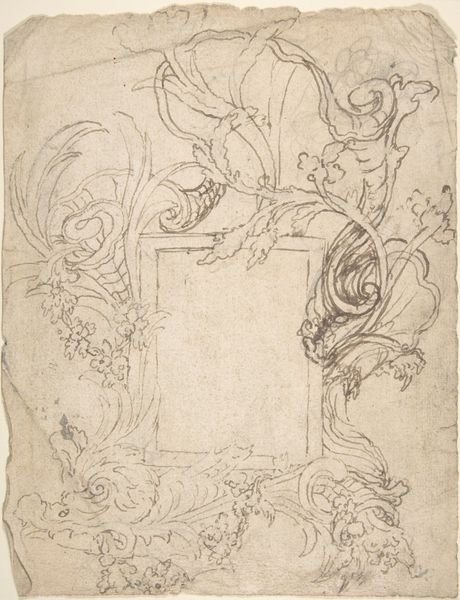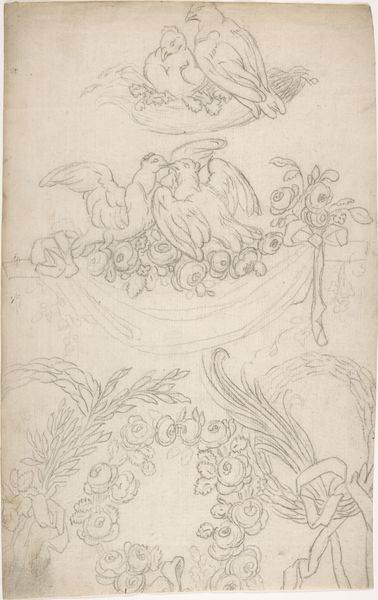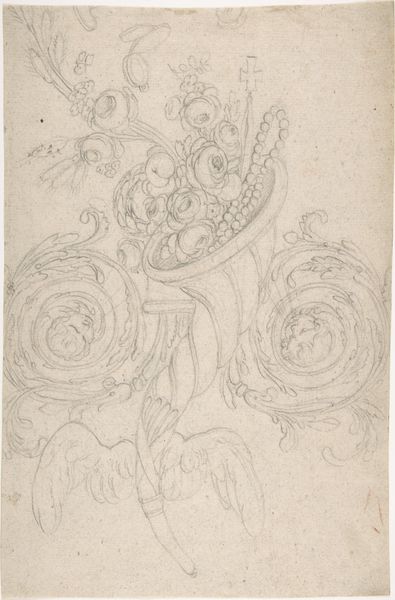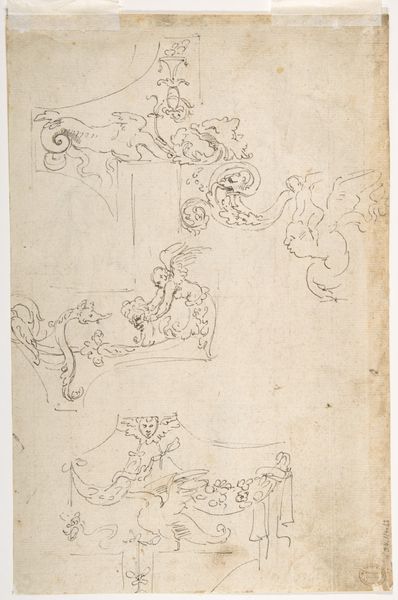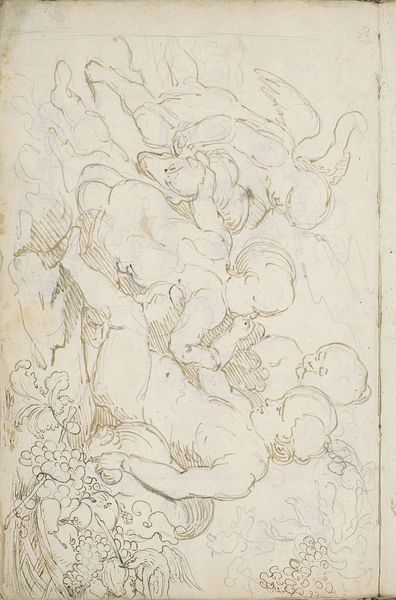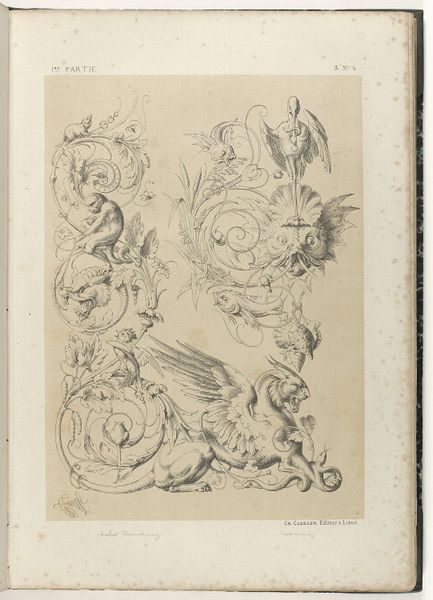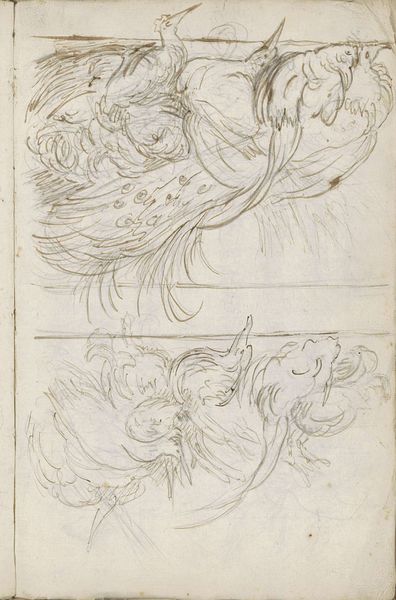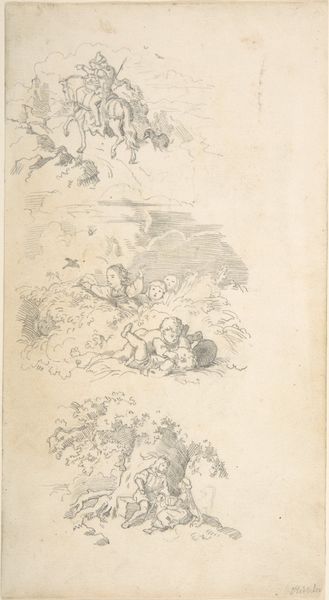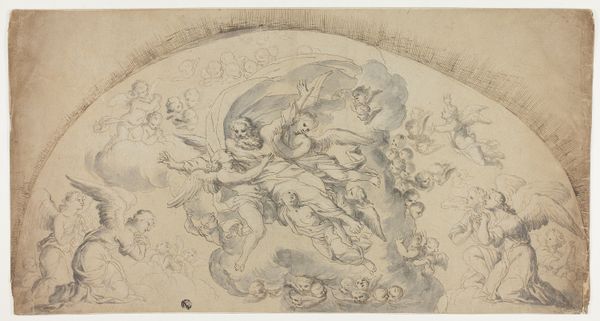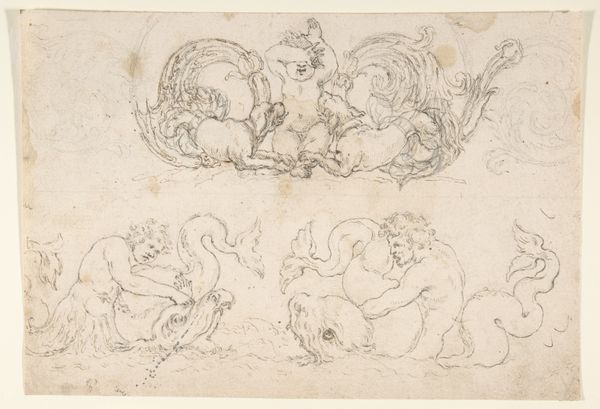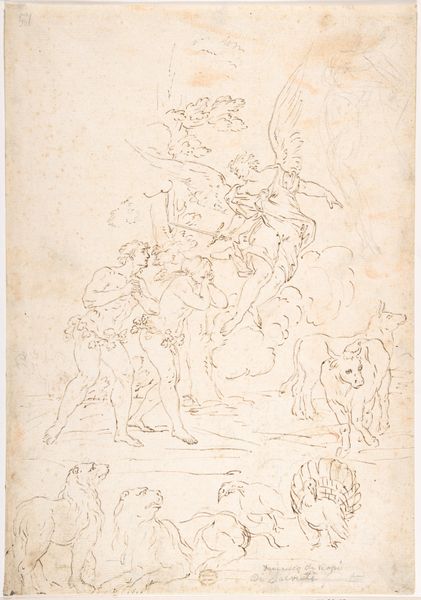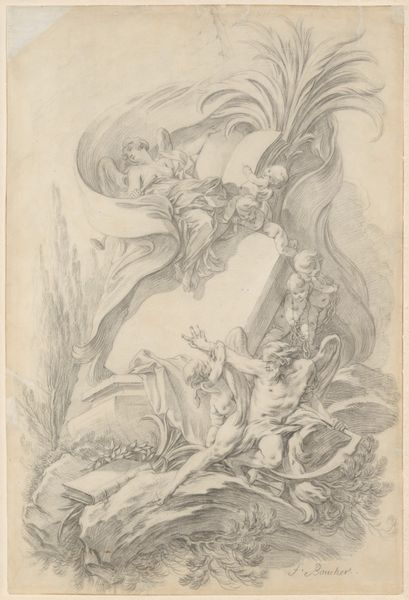
Ornament with Children Catching Ducks on Baited Strings 1775 - 1825
0:00
0:00
drawing, pencil
#
portrait
#
drawing
#
ink drawing
#
pencil sketch
#
landscape
#
figuration
#
child
#
romanticism
#
pencil
#
genre-painting
#
academic-art
Dimensions: sheet: 12 13/16 x 8 in. (32.5 x 20.3 cm)
Copyright: Public Domain
Editor: So, this drawing, "Ornament with Children Catching Ducks on Baited Strings," from somewhere between 1775 and 1825, is an anonymous piece made with pencil and ink. I find the scene, despite its rough sketch-like quality, strangely unsettling. What’s your perspective on this piece? Curator: Well, it is an intriguing sketch isn't it? Consider the labor involved, even in something seemingly lighthearted. Someone meticulously crafted this drawing, likely as a preliminary design. What purpose might it have served, given the era's context of emerging industries and burgeoning consumerism? Is this planned obsolescence, the design for a single disposable print? Editor: Disposable print, how so? Curator: Think about the material conditions. Pencil and ink were relatively accessible, but paper could still be a valuable commodity, its use suggesting either preparatory work for a more lasting piece or consumption on the go, so to speak. Was the production process highly regimented or was there a division of labor to hasten production? This may clarify whether or not it was the means to a more important piece. Editor: So you are saying we should not be looking at the picture itself, but asking about what and how the art was made in this period? Curator: Precisely. Consider the socio-economic implications. The pursuit of ornament suggests a leisure class, detached from the material realities of production and reliant on systems of power which are usually hidden in these landscapes. Do you see it that way as well? Editor: I didn't really, but now I am starting to see the connection. The delicate lines, the fleeting moment captured – they mask potentially unequal realities and labor structures that underpinned even leisure activities, even in this picture. Curator: Exactly. By focusing on materials and making, we can unpack hidden histories. I wonder if the use of pencils points toward accessibility of new means of image production for the masses. Editor: Thinking about this drawing in terms of its material context really opens up a different perspective! Thanks for sharing this new way of observing an artwork, Curator! Curator: You’re welcome. Considering art's materiality provides valuable insights into the world surrounding its production.
Comments
No comments
Be the first to comment and join the conversation on the ultimate creative platform.
